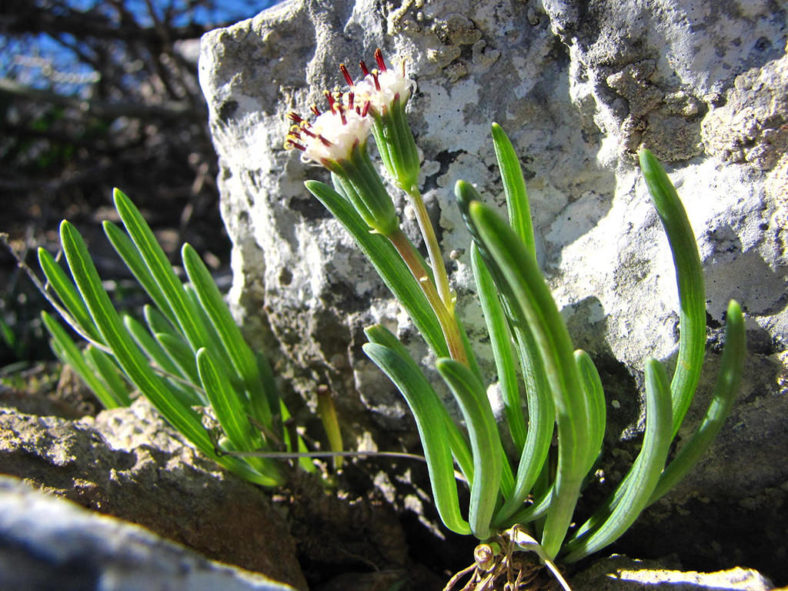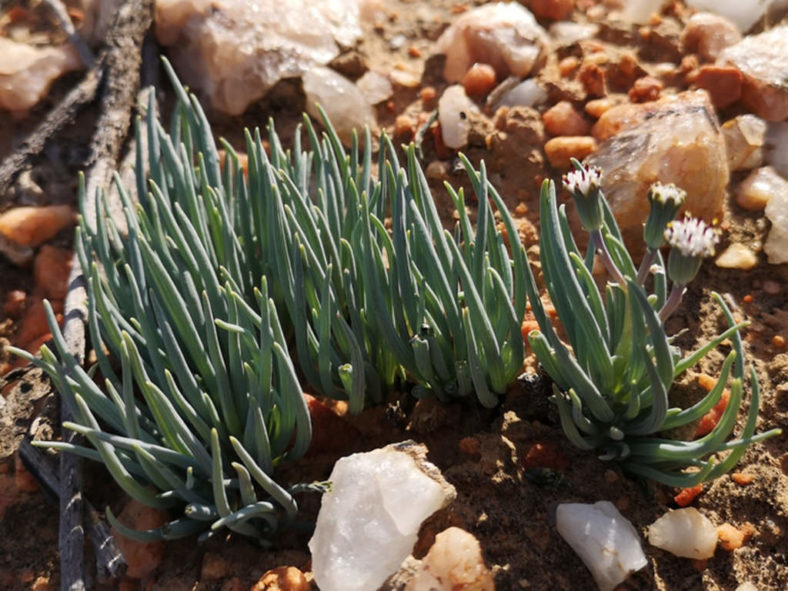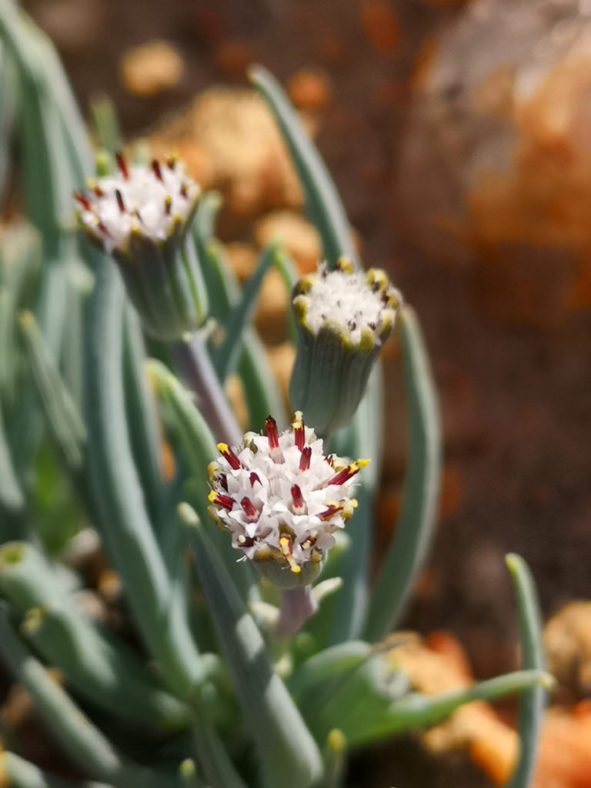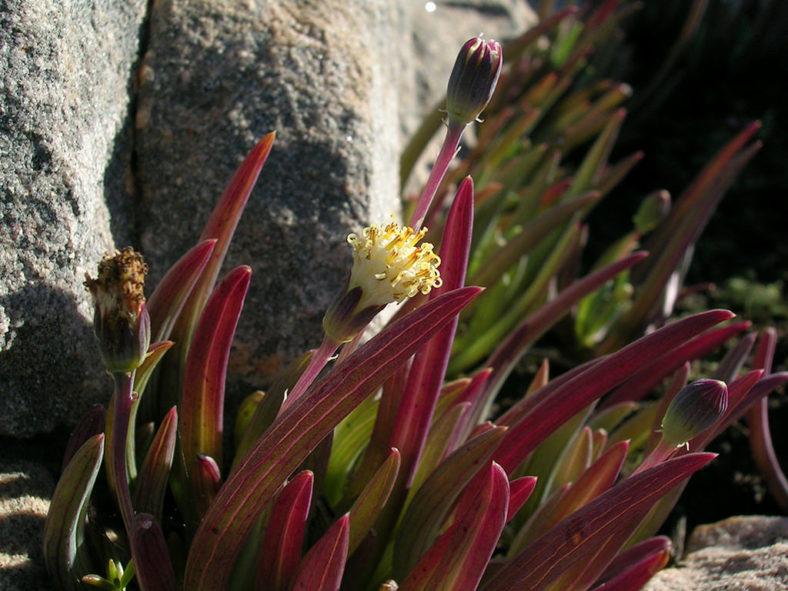Scientific Name
Curio cicatricosus (Sch.Bip.) P.V.Heath
Synonym(s)
Kleinia breviscapa, Kleinia subradiata, Senecio breviscapus, Senecio cicatricosus, Senecio subradiatus
Scientific Classification
Family: Asteraceae
Subfamily: Asteroideae
Tribe: Senecioneae
Subtribe: Senecioninae
Genus: Curio
Etymology
The specific epithet "cicatricosus (kee-kuh-tre-KO-sus)" is a Latin adjective meaning "covered with scars, scarred" and probably refers to the leaves with longitudinal stripes.
Origin
Curio cicatricosus is native to South Africa (Cape Provinces).
Description
Curio cicatricosus, formerly known as Senecio cicatricosus, is a small succulent shrub with a very short stem and narrow leaves crowded at the tip of the stem. The leaves are fleshy, smooth, somewhat cylindrical, often incurved, pointed, and can grow up to 2 inches (5 cm) long. They are gray-green to blue-green with translucent longitudinal stripes.
The flowers are white, held in clusters of up to 4 capitula, and appear at the ends of short stems in spring. The capitula can reach up to 0.4 inches (1 cm) in length and is nearly equal in diameter.

How to Grow and Care for Curio cicatricosus
Light: Keep your C. cicatricosus in partial shade if outdoors and bright sunlight if indoors. Avoid intense afternoon sun in summer. It will grow in full shade but will become lank and leggy.
Soil: As with most succulents, this plant prefers a well-draining soil mix. For growing C. cicatricosus indoors, using a container with at least one drainage hole at the bottom is essential.
Hardiness: C. cicatricosus can withstand temperatures as low as 25 to 50 °F (-3.9 to 10 °C), USDA hardiness zones 9b to 11b. The plant will not survive consistent temperatures below freezing.
Watering: Water regularly during the growing season, allowing the soil to dry out between waterings. This plant is drought tolerant, but the soil should never be left dry for too long. Reduce watering frequency during the winter months. Water only if the soil is completely dry.
Fertilizing: C. cicatricosus can take more fertilizer than other succulents if you want it to grow fast. Feed your plant once a year with a dilute solution of a balanced, water-soluble fertilizer in summer.
Repotting: You do not need to repot this plant often. You can do it when the container becomes too small or shallow.
Propagation: This plant can be grown from seeds or cuttings. Seeds need warm temperatures or seed warmer and constant moisture to germinate. Take cuttings during the spring and summer.
Learn more at How to Grow and Care for Curio.
Toxicity of Curio cicatricosus
C. cicatricosus is a toxic plant. Grow it with great care if you have children, pets, or livestock.
Links
- Back to genus Curio
- Succupedia: Browse succulents by Scientific Name, Common Name, Genus, Family, USDA Hardiness Zone, Origin, or cacti by Genus
Photo Gallery
Click on a photo to see a larger version.


